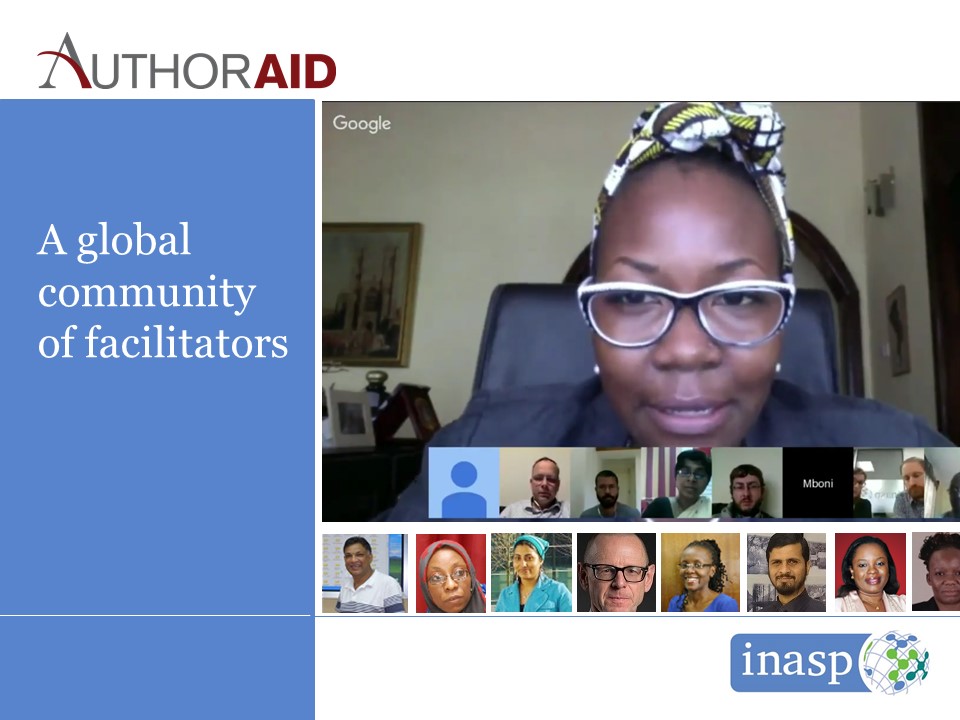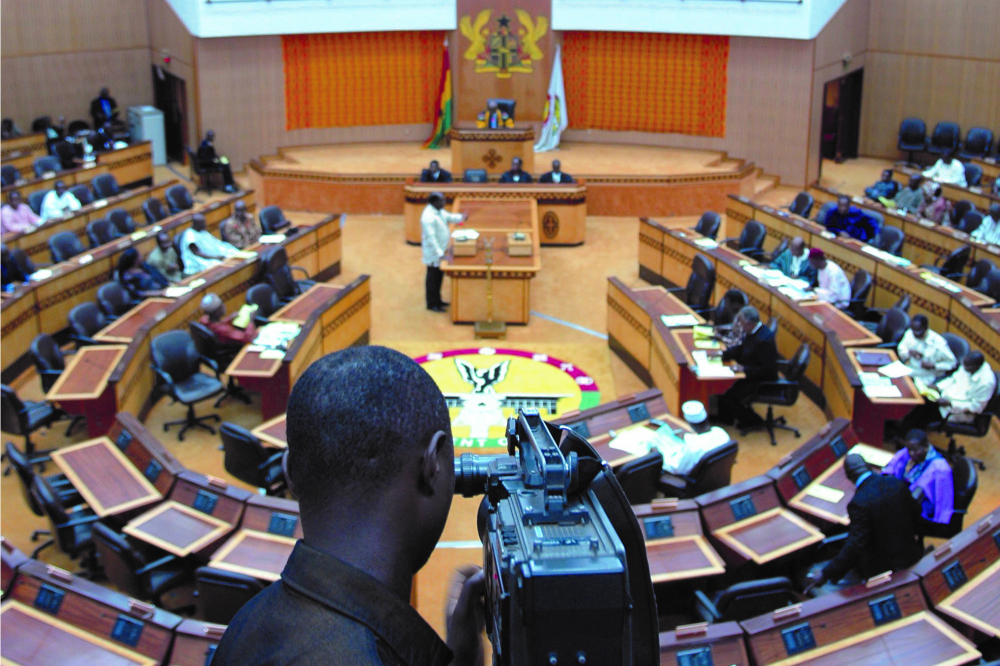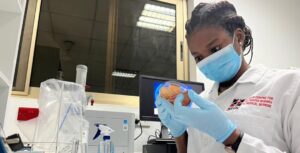
Building sustainability of self-supporting communities: INASP’s approaches
Joanna Wild discusses why vibrant, sustainable communities of practice are not straightforward – and what we can do about it
According to Etienne and Beverly Wenger-Trayner’s 2015 definition:
“Communities of practice are formed by people who engage in a process of collective learning in a shared domain of human endeavor […] a band of artists seeking new forms of expression, groups of engineers working on similar problems […] a gathering of first-time managers helping each other to cope.”
In the development sector, communities of practice (CoPs) have become popular as tools for promoting learning and knowledge sharing. But there are many myths about CoPs, not least the idea that the technology will solve everything.
In this post, I discuss the potential of CoPs but also the challenges – and how INASP is navigating these challenges so that CoPs can form an important part of our toolkit for engaging with our networks.
What makes a Community of Practice?
Wenger-Trayner argue that CoPs are made up of three intersecting components: domain, community and practice. The domain aspect recognizes that CoP members share concerns, interests, problem space, competence, commitment and vision.
But concerns and interests in the same domain are not enough in themselves; the second aspect (community) is about members engaging in joint activities and discussions meaningful to them. This includes helping each other, seeking and giving advice, and doing things together.
Building from this shared domain and joint activities comes the practice element of the CoP. This is about members co-producing knowledge and gradually developing a shared repository of outputs that can include new ways of doing things, new meanings, concepts, stories, methods, etc. There is a big role here for stewards to collate and curate representations of knowledge created by the community members for the benefit of the entire community.
Types of communities
Communities can be small or big, virtual, face-to-face or blended, long-term or short-term. They can be named differently, for example, international networks, thematic groups, virtual teams etc. Wenger-Trayner argue that CoPs have a natural lifecycle; some will ‘die’ sooner while others will last longer.
For me, the most helpful distinction is the one that focuses on the source of learning:
- In a learning community, the community is driven by a specific topical focus and over time its members develop a joint history of learning, which might include things like stories or case studies. One example is the Outcome mapping learning community, a “global, informal, open membership network for sharing information and facilitating learning on using Outcome Mapping for planning, monitoring and evaluating complex interventions”. Another example is Knowledge Management for Development, which focuses on approaches to knowledge management and issues around knowledge management and has resources dating back to 2000.
- In a network, the learning lies in connectivity itself. Within networks, the critical mass of network members allows for quick-fix Q&A types of interaction and reflective discussion around issues relevant to the network members. An example of this is the HIFA DGroup, which “provides a neutral discussion space for all those with an interest in the creation, exchange and use of relevant, practical healthcare information for citizens and health workers in low- and middle-income countries”.
- Finally, there are communities with a short-term purpose, which are usually formed as part of a project and can but don’t have to outlive it. An example was the recently ended K4Health Toolkit, which provided practical collections of trusted public health resources, chosen by experts and arranged for easy use. The community included information professionals from North and South, coming together for practice-based objectives.
I find this distinction helpful as it makes the primary purpose of the community explicit and helps community designers and stewards formulate realistic expectations of the community’s rhythm, lifecycle and the type of activities it is likely to engage in. For example, in a network, expertise should be distributed over a large number of members so that no particular group of people have to take all the load. As such, if you are building a network, efforts will be focused on ensuring that the number of members is rapidly growing towards a point of critical mass where any question can be quickly answered because there is always someone ‘online’ with relevant expertise.
CoPs at INASP
CoPs are one of INASP’s key capacity development approaches. The development of CoPs is built into our project design and implementation from the point of project initiation to ensure that there is enough time and resource to design, prototype and launch each community. For example, within the TESCEA partnership (working on higher education pedagogical reform in four universities in East Africa) we have been developing a community of academic lecturers who want to change their practice from teacher-centred to learner-centred pedagogy. Our approach is theory-informed, systematic, design-based, and most importantly it’s co-designed with and stewarded by its members.
We began looking at CoPs in our work during our SRKS programme between 2013 and 2018 to connect, for example, members of national library consortia or journal editors to facilitate knowledge and information exchange. One of our largest CoPs is the AuthorAID platform, which has developed from a project into a community of 20,000 researchers and practitioners around research publication skills. We have provided tools for connecting mentees with mentors, trained community members to become guest facilitators on our online courses and supported enthusiastic community members to steward journal clubs.
Why isn’t it straightforward and what to do about this?
CoPs are potentially powerful for bringing people together with shared interests, vision and needs. However, they come with many challenges and are not always successful. We have seen some of these challenges in our own experiences.
Common pitfalls of CoPs can stem from:
- Underestimating the effort needed for co-design with the members
- Issues with time and commitment of the core group of community stewards
- Overreliance on the ‘right’ technology as a silver bullet
- Issues around ownership and power relations within a CoP – in development the traditional North to South, Funder to Recipient, and local hierarchies dynamics play a role and need to be addressed.
Finally, knowledge sharing with a CoP can be limited by many personal factors including:
- Time and competing priorities
- Confidence – is it good enough?
- Lack of recognition – what’s in it for me?
- Cultural aspects such as preference for in-person rather than online interaction.
Maintaining the right level of interaction
As mentioned earlier, a thriving community requires a critical mass of members. Our experience at INASP suggests that this critical number of active members needs to be maintained when platforms change. Within a previous funded programme, we established an AuthorAID Dgroup, which was a network and had a critical mass of members to answer each other’s queries. When the funding finished, we no longer had the finances to pay for Dgroups and so migrated the members into collaboration forums within the main AuthorAID platform. This disrupted and changed the nature of interaction and so we are now looking into the ways to re-establish the network component of the AuthorAID community with open technology.
In the formation of AuthorAID journal clubs we also learned that some technology platforms work better than others for the kind of interaction that people want to have.
Communicating the benefits of involvement
To answer the “what’s in it for me?” question, when a new member joins a CoP, they should be immediately able to see the possible benefits and relevance to them of being part of the community. They must be able to take, before they will be asked to give i.e. contribute. Therefore, the community spaces need to be designed, prepopulated with relevant resources and have a rhythm to their activities so that a member knows exactly what to expect and when to expect it.
Building a sense of presence
Another important aspect is building a sense of presence through face-to-face, web and online events. Especially if the members of a CoPs don’t know each other, there is a need to create activities that will help this presence to emerge through online socialization. Such approaches can improve trust, confidence and recognition of shared competence.
AuthorAID includes several activities and services and connects with researchers in different ways, including regular massive open online courses in research writing. To increase numbers of members of the AuthorAID DGroup network, we regularly invited new members from MOOC participants to join the network. This improved the membership numbers, which resulted in a faster flow of queries and answers. It also helped increase individual member confidence in posting their questions.
At INASP we are building on the successes of our current work – and learning from the things that went less well – to build a more collaborative and community-driven platform where Southern researchers feel empowered to shape it and contribute to the shared resource hub.
For more information:
Wenger E., Trayner, B., (2015), Communities of Practice. A brief introduction
Cambridge D., Suter V., (2005), Community of Practice Design Guide
Cummings, S., (2014), Knowledge sharing in communities of practice in international development

 Previous Post
Previous Post Next Post
Next Post


